Special Tools
J 42385-200 Common Threads Repair Kit
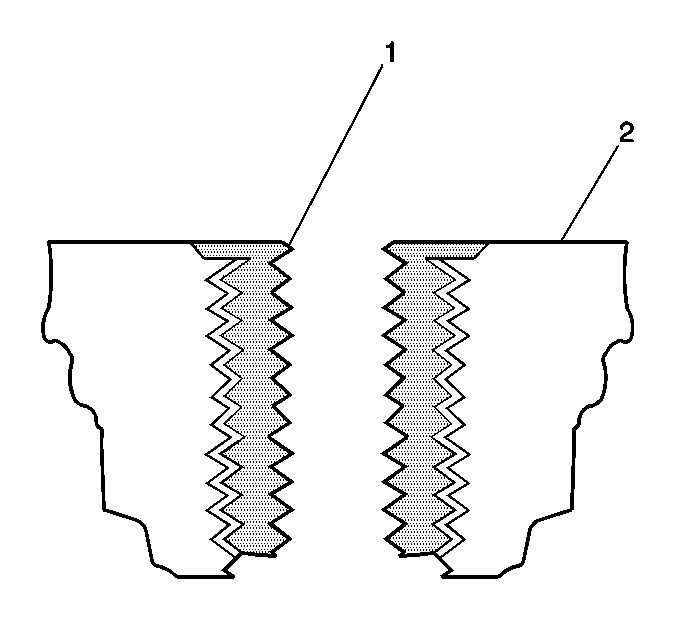
The thread repair process involves a solid, thin walled, self-locking, carbon steel, bushing type insert (1). During the bushing installation process, the driver tool expands the bottom external threads of the insert into the base material (2). This action mechanically locks the insert in place. Also, when installed to the proper depth, the flange of the insert will be seated against the counterbore of the repaired hole.
- Drill out the threads of the damaged hole (1).
- Using compressed air, clean out any chips.
- Counterbore the hole to the full depth permitted by the tool (1).
- Using compressed air, clean out any chips.
- Using a tap wrench (2), tap the threads of the drilled hole.
- Using compressed air, clean out any chips.
- Spray cleaner GM P/N 12346139, GM P/N 12377981 (Canadian P/N 10953463), or equivalent, into the hole.
- Using compressed air, clean any cutting oil and chips out of the hole.
- Lubricate the threads of the installer tool (2) with the driver oil (1).
- Install the insert (2) onto the driver tool (1).
- Apply threadlock LOCTITE™ 277, J 42385-109 (1), or equivalent, to the insert OD threads (2).
- Install the insert (2) into the hole.
- Inspect the insert for proper installation into the hole.
Warning: Refer to Safety Glasses Warning in the Preface section.

Note:
• The use of a cutting type fluid GM P/N 1052864 (Canadian P/N 992881), WD 40®, or equivalent, is recommended when performing the drilling, counterboring, and tapping procedures. • Driver oil MUST be used on the installer driver tool. • The tool kits are designed for use with either a suitable tap wrench or drill motor.
| • | M6 inserts require a minimum drill depth of 15 mm (0.59 in). |
| • | M8 inserts require a minimum drill depth of 20 mm (0.79 in). |
| • | M10 inserts require a minimum drill depth of 23.5 mm (0.93 in). |
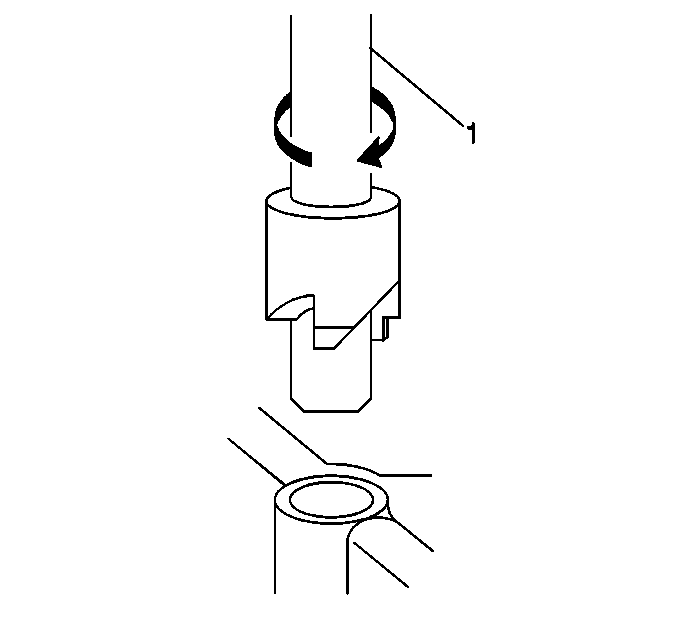

| • | M6 inserts require a minimum tap depth of 15 mm (0.59 in). |
| • | M8 inserts require a minimum tap depth of 20 mm (0.79 in). |
| • | M10 inserts require a minimum tap depth of 23.5 mm (0.93 in). |
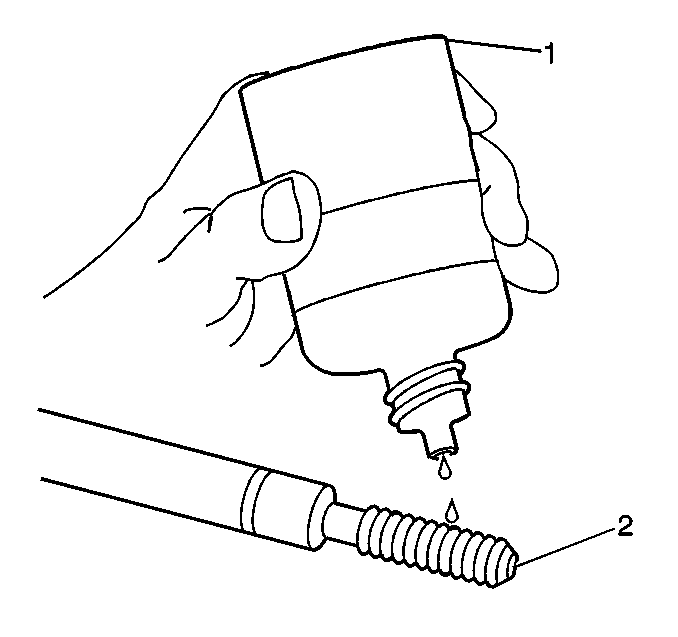
Note: Do not allow oil or other foreign material to contact the outside diameter (OD) of the insert.
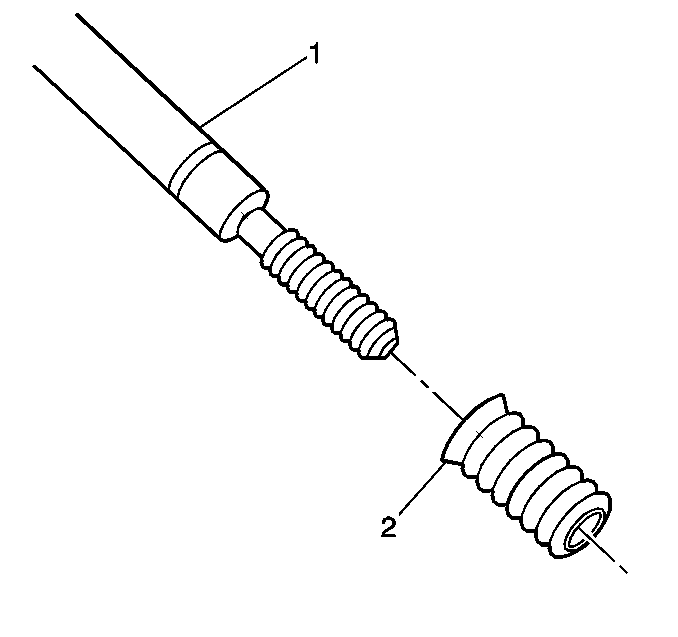
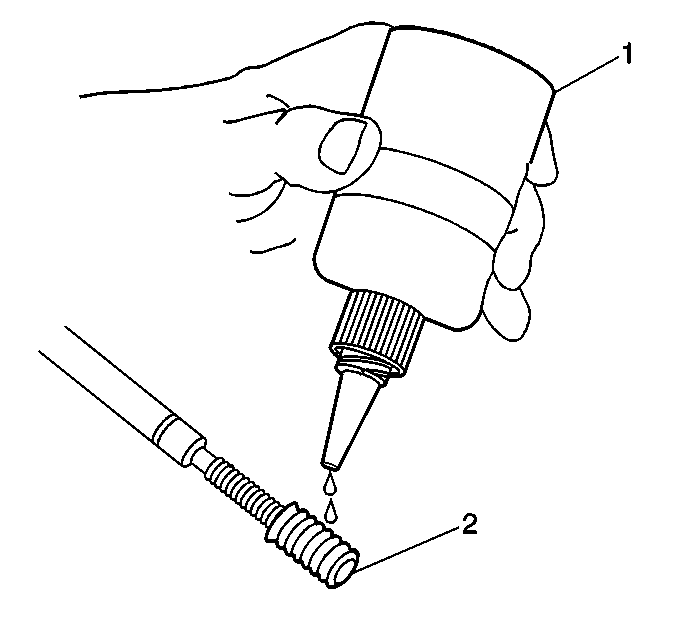
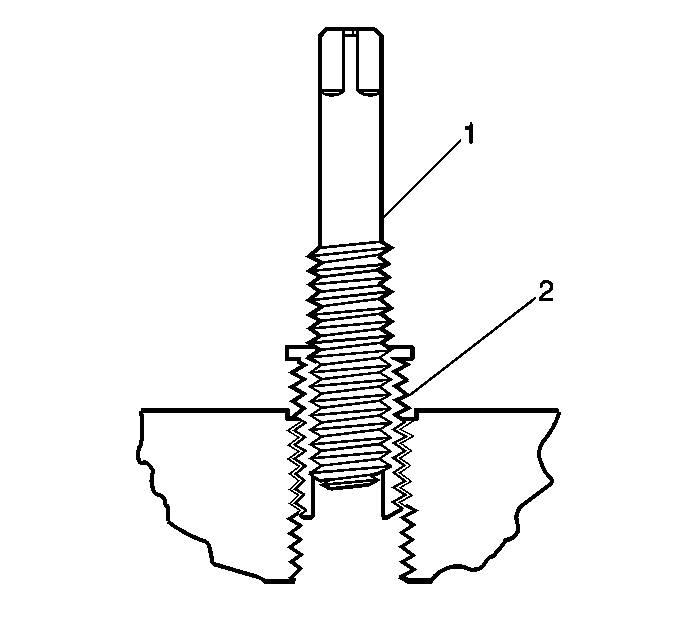
Install the insert until the flange of the insert contacts the counterbored surface. Continue to rotate the installer tool (1) through the insert.
The installer tool will tighten up before screwing completely through the insert. This is acceptable. You are forming the bottom threads of the insert and mechanically locking the insert to the base material threads.

A properly installed insert (1) will be either flush or slightly below flush with the surface of the base material (2).
